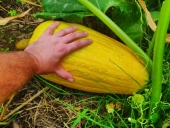




 1
1




Pecan Media: food forestry and forest garden ebooks
Now available: The Native Persimmon (centennial edition)




 1
1





 1
1




"Never doubt that a small group of thoughtful, committed citizens can change the world; indeed, it's the only thing that ever has."-Margaret Mead "The only thing worse than being blind, is having sight but no vision."-Helen Keller




 2
2




Pecan Media: food forestry and forest garden ebooks
Now available: The Native Persimmon (centennial edition)

 4
4





 2
2




Works at a residential alternative high school in the Himalayas SECMOL.org . "Back home" is Cape Cod, E Coast USA.








 1
1






















I think the main point of the newspaper pots is to not use plastic pots. The 'being able to plant the pot in the ground' aspect is kind of a bonus. It potentially allows a person to have less transplant shock. It might slow the interaction of the two soil systems, as it forms a barrier (which can partially remain in the soil), so removing it, has been recommended by some.I thought the whole point of newspaper was that it'd break down in time for the roots to grow through when planted in the ground.
"Never doubt that a small group of thoughtful, committed citizens can change the world; indeed, it's the only thing that ever has."-Margaret Mead "The only thing worse than being blind, is having sight but no vision."-Helen Keller













 2
2





|
My favorite is a chocolate cupcake with white frosting and tiny ad sprinkles.
Learn Permaculture through a little hard work
https://wheaton-labs.com/bootcamp
|




